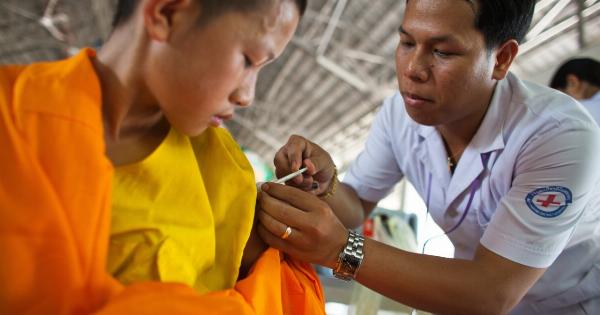A Cesarean section, or C-section, is a surgical procedure used to deliver a baby through an incision in the mother’s abdomen and uterus.
While this procedure is often necessary and can be life-saving, it does require a longer recovery period compared to a vaginal delivery. If you have undergone a C-section, here are some tips on how to minimize pain and recover quickly:.
1. Take Medication as Prescribed
Following a C-section, your doctor will likely prescribe pain medication to help manage discomfort. It is important to take the medication as prescribed and not skip doses. This can help keep pain under control and allow you to move more comfortably.
2. Get Plenty of Rest
Resting is crucial after a C-section to aid in healing and replenish your energy levels. Take naps during the day and aim for at least 8 hours of sleep at night.
Listen to your body and don’t hesitate to ask for help with household chores or caring for your newborn.
3. Stay Hydrated
Drinking enough water is essential for maintaining overall health and promoting healing. Make sure to stay hydrated by drinking plenty of fluids throughout the day. This can also help prevent constipation, a common side effect of pain medication.
4. Eat a Balanced Diet
Eating a nutritious and well-balanced diet can support your body’s healing process after a C-section. Include foods rich in vitamins, minerals, and fiber to aid in recovery.
Focus on incorporating fruits, vegetables, lean proteins, and whole grains into your meals.
5. Take Gentle Walks
Although it may be tempting to remain immobile, gentle walks can help improve blood circulation, prevent blood clots, and aid in the healing process.
Start with short walks around your house and gradually increase the duration and distance as you feel more comfortable.
6. Ease Back into Physical Activity
Avoid strenuous activities and heavy lifting for at least six weeks after a C-section.
Once you have received approval from your doctor, gradually reintroduce gentle exercises, such as postnatal yoga or low-impact aerobics, to rebuild strength and promote healing.
7. Practice Good Wound Care
Proper care of your C-section incision is crucial to prevent infection and promote faster healing. Clean the incision site gently with mild soap and water, and pat it dry with a clean towel.
Follow any specific instructions provided by your healthcare provider.
8. Support Your Incision
Supporting your incision can help relieve pain and reduce discomfort during daily activities. Consider wearing a supportive abdominal binder or using a pillow or rolled-up towel against your incision when coughing, sneezing, or laughing.
9. Seek Emotional Support
Recovering from a C-section can be emotionally challenging. Reach out to your friends, family, or a support group to share your feelings, concerns, and experiences. Emotional support can make the healing process more manageable.
10. Attend Postpartum Check-ups
Regular postpartum check-ups with your healthcare provider are crucial after a C-section. These appointments allow your doctor to assess your healing progress, address any concerns, and provide guidance on when you can safely resume normal activities.






























